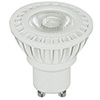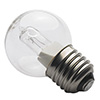
More Articles

Confused about the new laws about incandescent light bulbs? If so, don’t feel bad. So are the majority of journalists, environmentalists, consumers, contractors, and conspiracy theorists. With just a brief glance at the internet about the new regulations and you will find anything from articles on government intrusion and secret agendas to how greedy American consumers are polluting the world to inhabitability. And the amount of hearsay and false information about it could fill a few volumes.
With this article, I hope to clarify what the new regulations mean and how it will possibly affect you, your home and your business. Further, we are in the indoor environmental business – any factor that contributes to or detracts from a healthy, aesthetic and productive environment catches my interest. And lighting is a major factor in creating an ideal environment. But this article is not about what lighting can or can’t do or how to design and use lighting to improve one’s indoor environment. It is about the new regulations that vastly alter what we can light up our indoors with.

First, some debunking of false infomration that has spread:
- This is not a new law. The regulations that dictate new energy efficiency for light bulbs, were first proposed and then agreed upon during the Bush administration in 2007. The law, "The Energy Independence and Security Act of 2007", was enacted to be phased in over several years. 2014 simply marks another phase of its implementation with yet another phase requiring an even higher efficiency rate in 2020.
- It is not a law that bans the use of incandescent light bulbs. You may have heard that “this year, 60-watt bulbs are being outlawed”. The regulation is simply aimed at being more efficient with the energy used to “drive” a light bulb.
A “100 watt light bulb” was actually a light bulb that produced about 1490 to 2600 lumens (the measure of the brightness of light) and it used 100 watts to produce those lumens. The new regulations state that a light bulb putting out that same range of lumens must only use 72 watts of electricity instead of 100 watts. Similar requirements were established for the old 75, 60 and 40-watt bulbs.
So, while the law does not specifically prohibit the manufacture of incandescent bulbs, the reason you don’t see them on the shelves anymore is that the manufacturers do not have the technology to make a traditional incandescent bulb meet those standards. Or if they do, the cost is prohibitive. Either way, you can be assured, profit- driven companies would be making them if they could see a healthy profit doing so. - You will NOT need to remove all the incandescent bulbs from your home or business. Anything you have heard that hints the “light bulb police” will be inspecting your home is completely false. In fact, if you had decided to raid Home Depot last year and buy up 20 years’ worth of 40, 60, 75 and 100 watt light bulbs, you will be perfectly OK to continue to use them until you run out of them. In addition, retailers with incandescent light bulbs left in stock will be able to sell them until their stock runs out.
- NO, you will NOT need to put fancy $45 light bulbs in your oven or refrigerator. Most specialty and decorative incandescent bulbs are not subject to the regulations and will still be manufactured and available for purchase such as low wattage bulbs (typically below 40 watts), 3-way light bulbs, rough service bulbs for contractors and industry, bulbs whose main purpose is providing heat. The list goes on.
- Contrary to some rumors, the lifetime cost of a CFL bulb is less than a comparable incandescent light bulb. “Cradle to Grave” energy use and real cost includes ALL energy and funds used to mine, transport, manufacture and operate for its entire life, any consumable product. An argument has been made that when you take everything into consideration, that the environmental impact of making a CFL bulb is higher than that of an incandescent light bulb. Several studies have shown this to be untrue.
While the manufacturing costs of a CFL bulb are considerably more than that of an incandescent bulb in terms of materials and energy use, a CFL bulb uses about 1/5th to 1/3rd less energy to produce the same amount of light as that of a comparable incandescent bulb. Not only that, the expected life of a CFL bulb is 8 to 15 times that of an incandescent bulb. Add all that together and one study said a CFL “pays” for itself in just 50 hours of use. Even if that is overly optimistic, there are plenty of other studies that indicate significant savings in energy use as well as actual out of pocket costs over the entire life of the devices.
That being said, there are serious concerns about the CFL bulb in particular. It does contain 4-5 mg of elemental mercury, which has obvious long term harmful effects. I shudder to think of millions of used and broken CFL bulbs being tossed into the local landfills. Despite the advisory that they are “properly disposed of”, it is more than likely that most of them will be sent out with the normal trash and thus eventually into our environment.
So you could argue that the law does, in essence, ban the use of incandescent light bulbs. I guess in a way, it does, but look at the reason why:

A normal, traditional incandescent light bulb only converts 3-8% of the energy it consumes into visible light. The remaining 92-97% is dissipated as HEAT and unless you are planning on heating your home that way, it is, by anyone’s standards, an awful waste of electricity. And when you look at it, how many billions of incandescent light bulbs are there just in the US alone and then consider that 90 plus percent of the electricity needed to operate those lights is really just wasted. You can do the math and see the value of exploring long term solutions.
It is sometimes argued that with this law, the government is just exercising its might and taking one step too far intruding into our lives. Whatever your political ideologies, that argument just doesn’t hold weight. There is no statute in the Bill of Rights granting an inalienable right to incandescent. We are talking billions of light bulbs and countless kilowatts of wasted energy.
By that logic, the government should never have taken steps to control the use of lead or asbestos. In both those cases, the manufacturers were very well aware of the health implications yet for decades did nothing until forced to do so. It has long been known that traditional incandescent lighting is a very inefficient use of electricity, yet the technology has remained essentially unchanged for decades.
Advancements have been made more in the direction of cheaper manufacture, not improved efficiency.
Here is the straight data as I see it:
- The Energy Independence and Security Act of 2007 is in place and is rolling out. The incandescent bulbs we all grew up with are definitely a thing of the past. But it applies to standard bulbs and does not currently affect specialty or decorative lighting.
- The replacements are still limited, but the technology is progressing and the future holds a lot of lighting options we never thought of before.
- The law does include regulations regarding standard linear fluorescent light bulbs (most 8’ lights aren’t being made anymore, for instance), but you can still go buy regular 4’ fluorescent light bulbs for your garage, shop or office.
The main options we have are:



- Compact Fluorescent Lighting (CFL). These are moderately priced and do pay for themselves in a relatively short time. The life is 8-15 times longer than standard incandescent light bulbs. But in my opinion, the light is annoying – they are, after all, fluorescent lights which have a limited spectrum and the incessant subliminal flickering. They also contain mercury which is a big, big downside and potentially can have a major negative environmental impact.
- LED Lighting. This is a quickly evolving technology that isn’t quite there yet in terms of practicality, affordability, and comfort. The bulbs are very expensive but have a very long life. The color can be modulated, but generally is much cooler and harsher than the warm color we have grown accustomed to over the last century. With advancements, as with most other technology, the prices will come down and the quality and variations will increase. At this time, it would cost $400 or more to replace all the incandescent lights with LEDs in a small home, and it would take some time to fully recoup that initial investment, but they will eventually pay for themselves.
- Halogen Bulbs. The halogen light bulb or lamp is a type of incandescent lamp which uses a halogen gas in order to increase both light output and rated life. They are known for moderately high efficiency, quality of light, and a longer life compared to regular incandescent lamps. Halogen lights are more commonly used in commercial or accent lighting situations, but at this time a “Type A Halogen” bulb is being produced as a replacement for regular incandescent bulbs and do fall within the energy consumption regulations stated in the law. The cost is comparable, and they look like the incandescent bulbs you are used to. The light is harsher, but I’ve put some in my house and the light is fairly warm, certainly not as harsh as LED lights. But the down sides are the life is not really that much longer than regular bulbs and the bulbs get HOT, so care has to be taken. The bottom line is this is an affordable substitute as other options become more available.
- Organic LED Lights. An OLED 'light bulb' is a thin film of material that emits light. Unlike incandescent bulbs, which generate light by passing electricity through a wire or fluorescent lamps which pass electricity through a gas, OLED lighting passes electricity through some extremely thin layers of organic material and so OLEDs can provide an “area-lighting panel”. Not only are OLEDs very efficient (somewhere between CFLs and LEDs), but these 'lamps' do not contain any bad metals such as mercury, which is present in CFLs. The flexibility and future possibilities for this technology are amazing, but at this time, any area lighting is out of the question. A small table lamp using OLED will cost you $5,900!

On a practical basis, OLED technology is now limited to use in electronic devices such as smart phones, tablets, very expensive televisions and in R&D situations, but as development continues, this technology will become more available in a variety of forms, including general indoor lighting.
OLED is something for the future - if development continues along current lines OLED may fully revolutionize what we think of “lighting” and how we use it. Not only will the energy consumption will be negligible for equal lumens, the technology will be able to create whole walls of soft light that is fully controllable or flexible plastic panels that can be positioned to light whole rooms or create spatial separation, atmosphere, mood, accents. But that is all for the future – the technology is in its infancy and as of now is far, far too expensive for any practical use in environmental lighting.
We’ll be keeping an eye on the development of lighting and options as things progress both in terms of the technology and as it relates to indoor environments. And we’d like to hear of anything you might come across in this quickly evolving topic.






